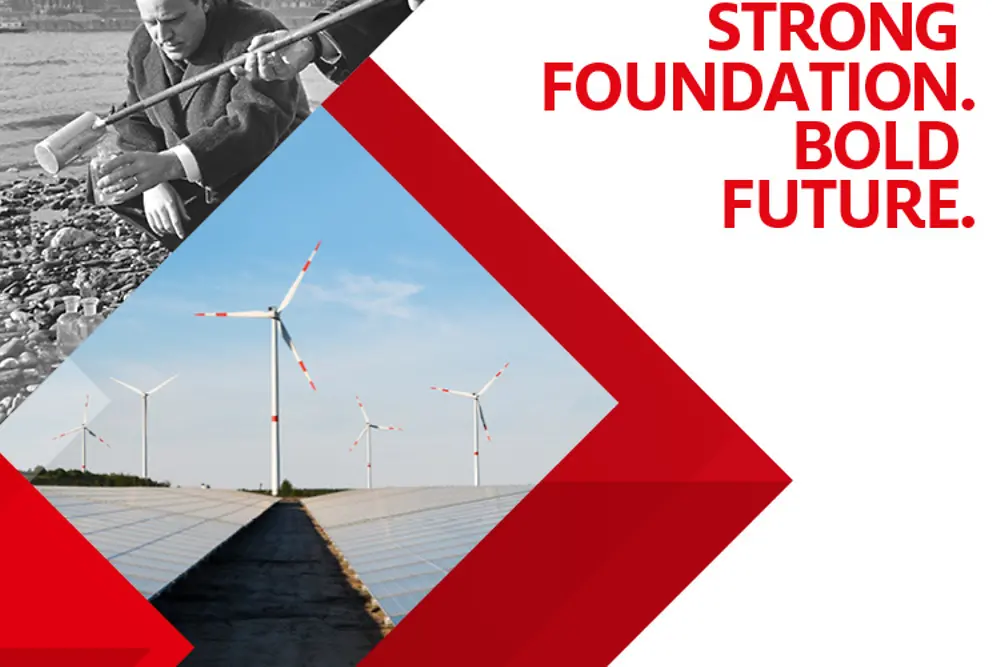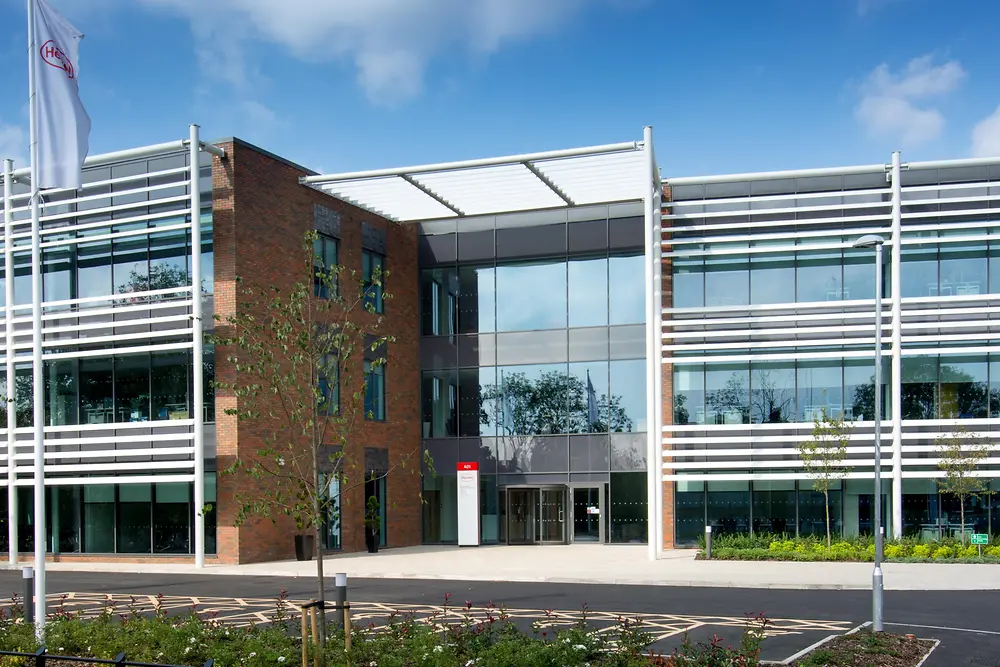Learn more about Henkel Brands & Businesses in UK & Irelands: Includes useful information about the brands, technologies and latest innovations in our business areas: Henkel Adhesive Technologies and Henkel Consumer Brands.
Could agility be the key to prevailing in the new world of work?

In this interview you will learn:
- What agile working is all about
- What key principles agility in the work environment relies on
- Which values underpin agile working methods
- Whether everyone has to adopt agile working now
- What added value agile working methods bring to the home office
- How companies can successfully evolve towards more agility
Scrum, kanban, design thinking: most of us have heard of at least one of these new work models. How many of us really know what distinguishes these methods, which are increasingly popular in even the largest corporations? How can agile ways of working make the daily grind more flexible and innovative? These are just a few of the questions that the Handelsblatt Media Group’s Germany-wide educational initiative “ada | Fellowship“ has set out to answer. The campaign is designed to support businesses‘ digital transformation and contribute to shaping the future economy. About 25 Henkel employees are currently completing the interdisciplinary, add-on training program made up of virtual conferences, workshops and online learning modules. We spoke to Jan Schröder from the innovation agency minds & makers, who coaches the ada fellows.
What does “agile working” actually mean?
It means that a company is capable of adapting to external circumstances and of reflecting on, validating and proactively defining its course of action. The current context, more than ever before, requires businesses to tune into new developments and to the customer needs that result from them. Agile working methods are one way of acquiring this ability to adapt quickly to change. Agility can become a major factor in a business’s success as it helps companies to reinvent themselves continuously and cultivate their flexibility.
Aside from the specific methodology, implementing agile ways of working requires the right kind of mindset. What key principles does agility in the work environment rely on?
Mainly interdisciplinarity and collaboration: in other words, venturing outside the boundaries of your own division to escape the silo mentality and allow experts in different fields to work together on diverse teams. Decision-making has to be shared and should happen swiftly in this setting, which is a big advantage for collaborative working. Solutions should be designed collegially in a process of co-creation. This allows a team to prevent each division from working independently of the others and producing results that subsequently have to be combined into a compromise that satisfies nobody. Then there is the principle of user focus: solutions should be developed specifically with the user’s needs in mind. More generally, all agile processes should be centered around the user. Does our idea solve a problem? Does it fulfill the users‘ expectations? Teams need to proceed iteratively, which means continuously reassessing, validating or adapting concepts through constant feedback loops and structured learning cycles.

Agile working is about listening carefully to your colleagues and employees to find out what the open questions and unsolved problems are, and where this new way of doing things can add value.
Jan Schröder, coach at the innovation agency minds & makers
What are the values underpinning agile working methods?
The corporate culture is a decisive factor when it comes to developing agile work processes. Managers have to empower their employees to self-organize – and thus relinquish some control. Agile methods demand flat hierarchies. Decisions have to be made collegially. Open communication and a transparent culture of learning from mistakes are also crucial: mistakes should be seen as opportunities. Only those who actually make mistakes can learn from them. Trust is important because agile working is usually experimental and self-organized. Mistakes happen in every experiment, so trusting relationships are essential both within the team and between employees and their managers.
Agile working also relies on defining clear visions and concrete goals which, paired with autonomous teamwork, increase a company’s reactiveness and efficiency. In this open-ended process, it is rarely evident from the outset what the path to a solution will look like in practice. Instead, it should be clear to everyone what they want to achieve as a team. This requires a certain level of freedom and trust, but it allows companies to react appropriately to the growing complexity and dynamics of the business environment. The Lean UX approach plays a key role here, placing the user at the center of the process. This involves specific methods like Scrum or design sprints. These approaches to project management foster an iterative way of working built on learning cycles following the “Build – Test – Learn –“ principle, which allows mistakes to be detected early on and reduces the risk of failed developments.
Does everyone have to adopt agile ways of working now?
Not every solution to every problem needs to be worked out through agile methods. There are straightforward problems that are easy to solve without needing to resort to an agile work process. For example, if an invoicing system constantly produces the wrong bills, it probably makes sense to look for the malfunction directly. As a rule, the more complex the problem, the better suited agile processes are to solve it. In general though, I would say that agile principles, work cultures and mindsets are valuable for every business – although it should always be carefully considered whether the methods meet the needs of the relevant department or function within the company. Simply put, not everyone needs to work in a Scrum framework.
How can agile methods be used in the home office?
First of all, you need to have the right digital tools – and know how to use them. The major added value of agile working is its heavily team-oriented way of doing things, particularly in workshops. Especially in the COVID-19 era, when team members may not meet in person for several months, these methods foster cohesiveness. Agile working is about making things visible and tangible, which can also be helpful in the home office. By working from home, many people have learned to be better organized and this in turn enables agile working, which relies on the individual’s ability to self-organize.
How can companies successfully evolve towards more agility?
Agile working helps organizations to move with the times, but there are often barriers to be overcome when it is implemented. Agile working should also be introduced to the business in an agile and user-centric way. There can be no one-size-fits-all strategy in this context.
When you want to engage an entire company with the topic of agile working, setting up pilot projects or innovation labs are popular and effective ways to make the methods practicable and to demonstrate their power in the real-life context of the organization‘s activities. Nonetheless, cultural change does take time and should be expected to take hold incrementally.

Agility is about efficiency: it means achieving the best possible result with the fewest possible resources.
Jan Schröder, coach at the innovation agency minds & makers
Another important aspect is the transparent management of expectations. Agility is often equated with speed, but this is a misunderstanding. Agility is about efficiency: it means achieving the best possible result with the fewest possible resources. Teams should develop a common language and shared understanding of what agile working really means to avoid diverging interpretations and misapprehensions.
Defining clear, actionable goals is also key: What do you want to achieve through this new way of working? Lastly, it is imperative that the management actively drive and support the change so that employees don’t get overwhelmed. Too much change can quickly lead to insecurity and rejection. Companies should develop concepts for imparting the relevant skills to their employees and give them the learning space they need.
Everything else is usually about “learning by doing”. Experience tends to be the best teacher, especially when something comes down to having the right mindset rather than applying the right method. Just try it out: the benefits of this new way of working will quickly become apparent.














